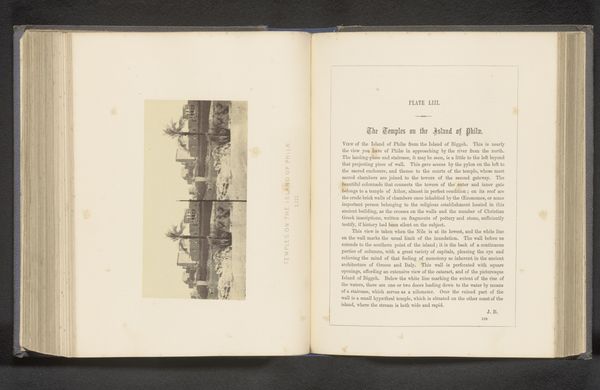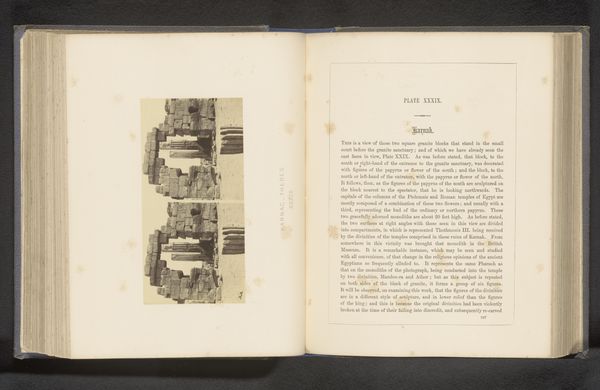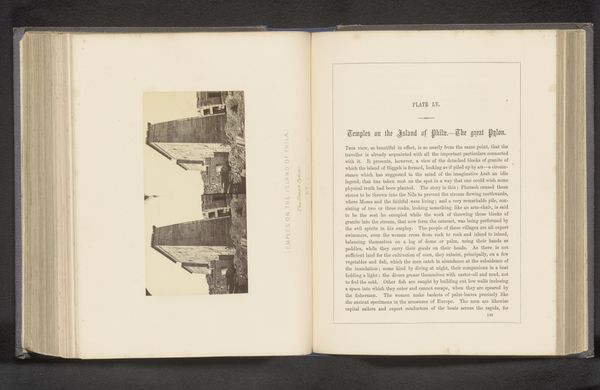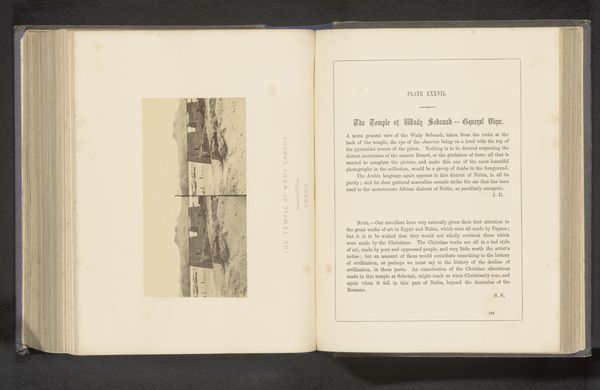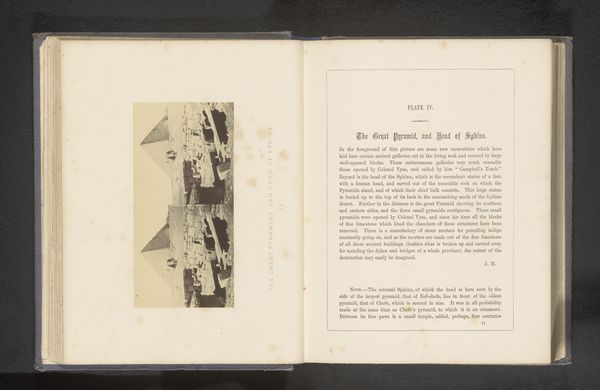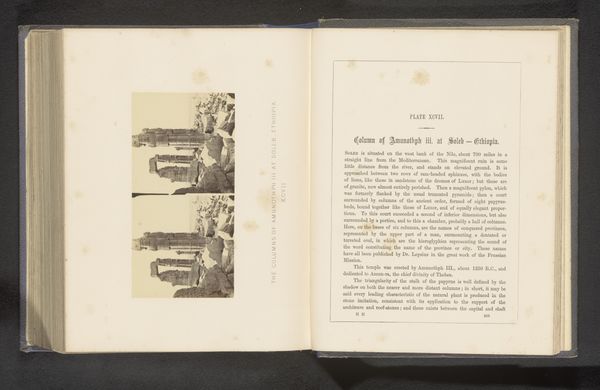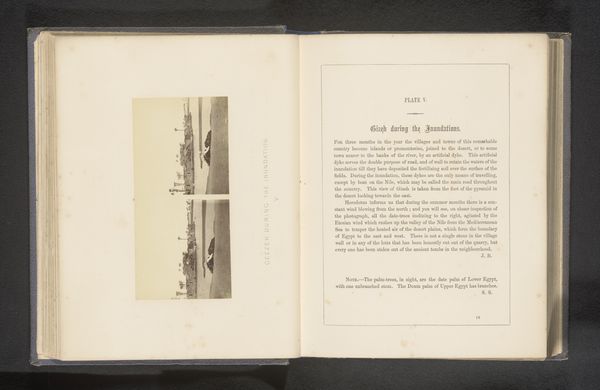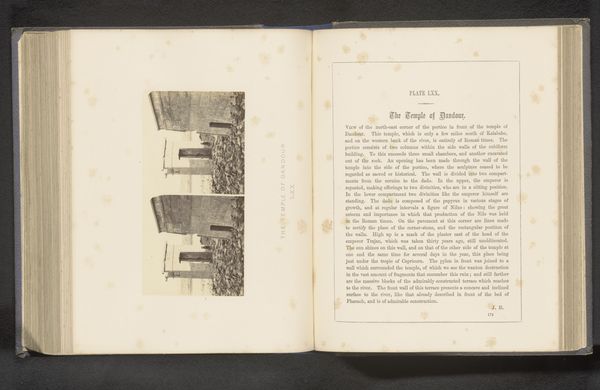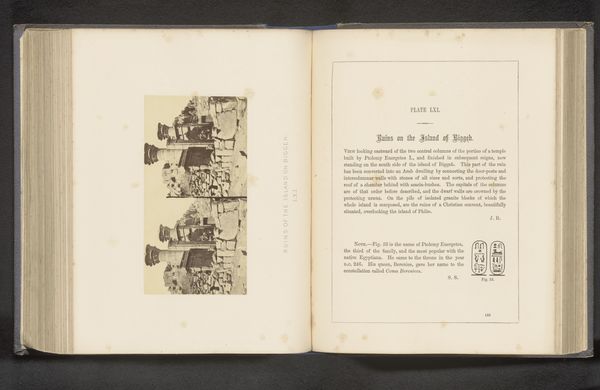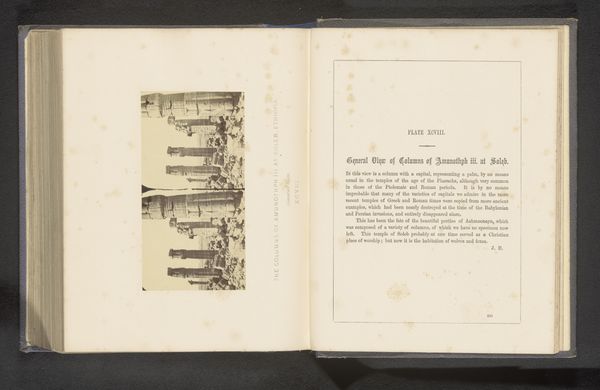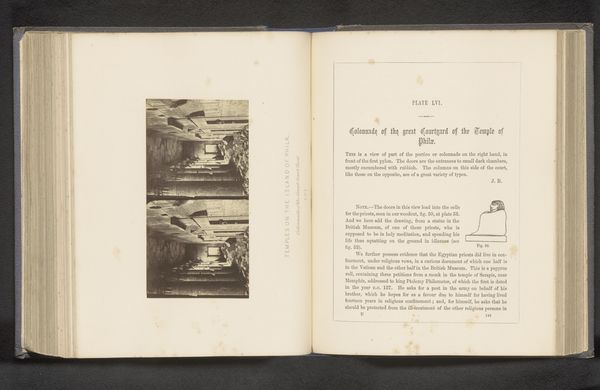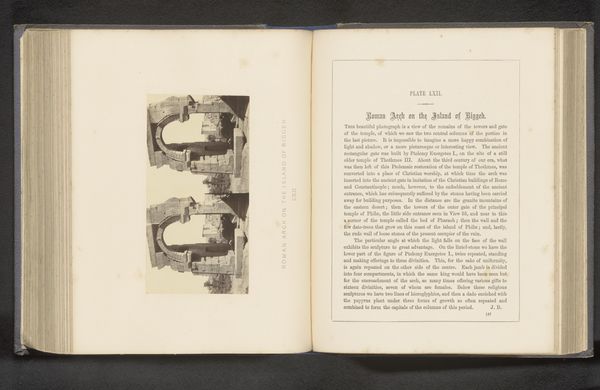
print, photography, albumen-print
# print
#
landscape
#
ancient-egyptian-art
#
photography
#
ancient-mediterranean
#
albumen-print
Dimensions: height 74 mm, width 144 mm
Copyright: Rijks Museum: Open Domain
Francis Frith produced this albumen print of the temple complex at Philae, in Egypt, sometime in the mid-19th century. It’s a stereoscopic image, designed to create an illusion of depth when viewed through a special device, a popular form of entertainment at the time. Frith was one of the first British photographers to travel extensively in the Middle East, documenting landscapes and ancient monuments. These images catered to a growing European interest in archaeology and the ‘Orient,’ but they also reflect the colonial gaze of the time. Photography played a crucial role in shaping Western perceptions of non-Western cultures, often reinforcing stereotypes. Consider the politics of such imagery: who had access to these photographs, and what narratives did they promote about Egypt and its history? To fully understand this image, we might look at travel literature, colonial archives, and the history of photography itself. The meaning of art is always contingent on the social and institutional context in which it is produced and consumed.
Comments
No comments
Be the first to comment and join the conversation on the ultimate creative platform.
